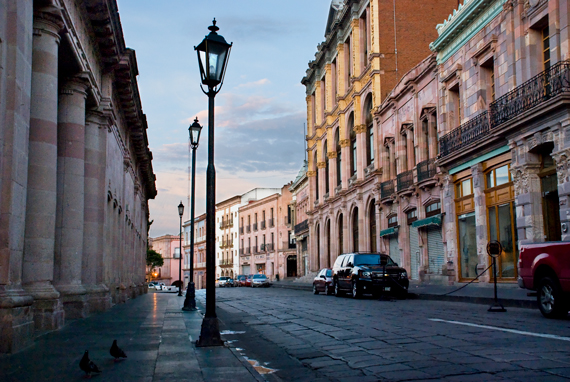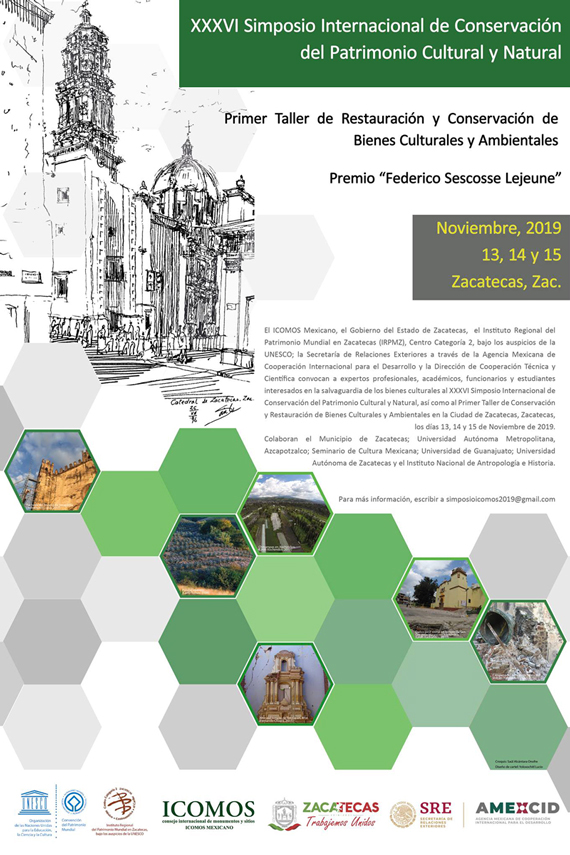|
XXXVI International ICOMOS Symposium
By Maria Curry
November/December 2019
The XXXVI International Symposium on Natural and Cultural Patrimony and the first workshop on the Restoration of Cultural and Environmental Resources will take place on November 13-15, 2019 in Zacatecas, Mexico. Students, professionals, professors, public officials, and preservationists are all invited to the symposium, which includes panels of European, Latin American, and Caribbean experts with their ICOMOS Mexicano counterparts.
The topics are:
- Cultural heritage in the face of natural and human catastrophes
- Projects and work on artistic and historic monuments
- Projects and work on historic objects
- Restoration and preservation of cultural and rural landscapes
- Master plans for the conservation and management of historic, archeological, and artistic sites
Zacatecas is a beautiful mining state, rich in deposits of silver and other minerals. Its capital, also named Zacatecas, is a colonial city worth visiting, and is on UNESCO's World Heritage list because of the quality of its urban design and magnificent architecture.
For more information write to simposioicomos2019@gmail.com
The Zacatecas symposium on cultural and natural heritage is a preamble for a similar event in the north of Mexico, which has been neglected in the past. This is because its cultural resources are mostly from the recent past, whereas the rest of the country has an older heritage. Groups and individuals in Baja California, including myself, are now negotiating with ICOMOS Mexicano to bring the next symposium to our region. The new state government is considering cultural heritage preservation one of its priorities. Mexicali's new mayor is already promoting the designation of its downtown as a historic center.
The tentative topicsfor this conference could be:
 Avenida Hidalago in the historic center, Zacatecas, Mexico. Photo by Eneas de Troya |
- UNESCO defines intangible cultural heritage as "…the uses, representations, expressions, knowledge, and techniques—together with the instruments, objects, artifacts, and cultural spaces inherent to them—that communities, groups, and, in some cases, individuals recognize as an integral part of its cultural heritage. This is expressed in the following areas: a) oral traditions and expressions, including language; b) performing arts; c) social uses, rituals, and festive activities; d) knowledge and uses related to nature and the universe."
- Border history expressed in buildings, sites, and historic areas, including those created by American and Mexican architects, such as railroads, casinos, hotels, etc.
- Economics of preservation in border cities, including cultural tours and U.S. retiree communities along the routes from Tijuana to Ensenada that have acquired historic significance.
- Cultural and natural landscapes including archeological and rural areas, and resources know no political borders.
I hope we can make this event possible, and I invite the public to join us in supporting both conferences.
|
2025
2024
2023
2022
2021
2020
2019
2018
2017
2016
2015
|





